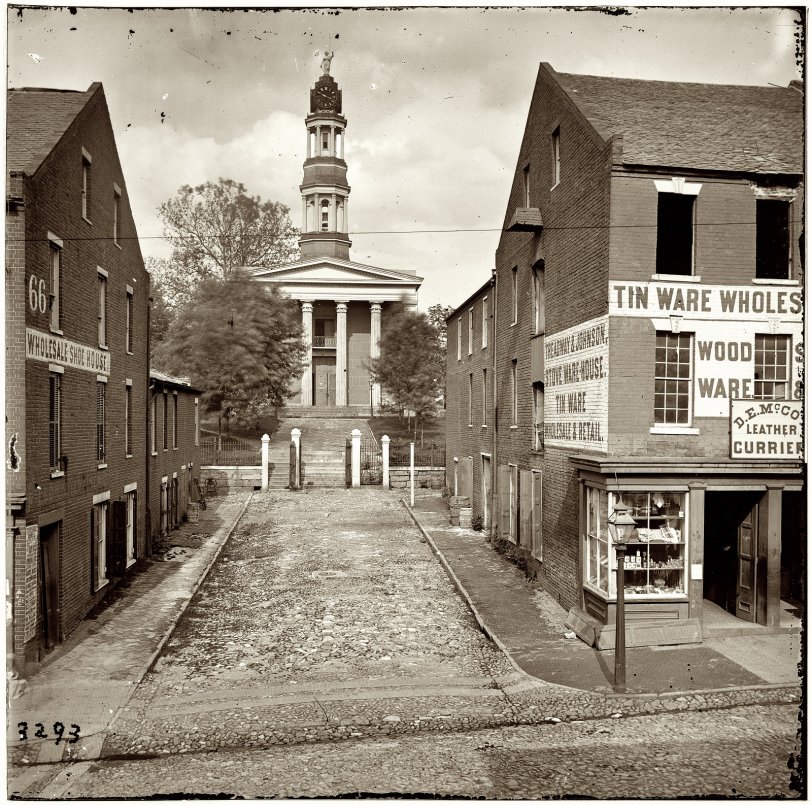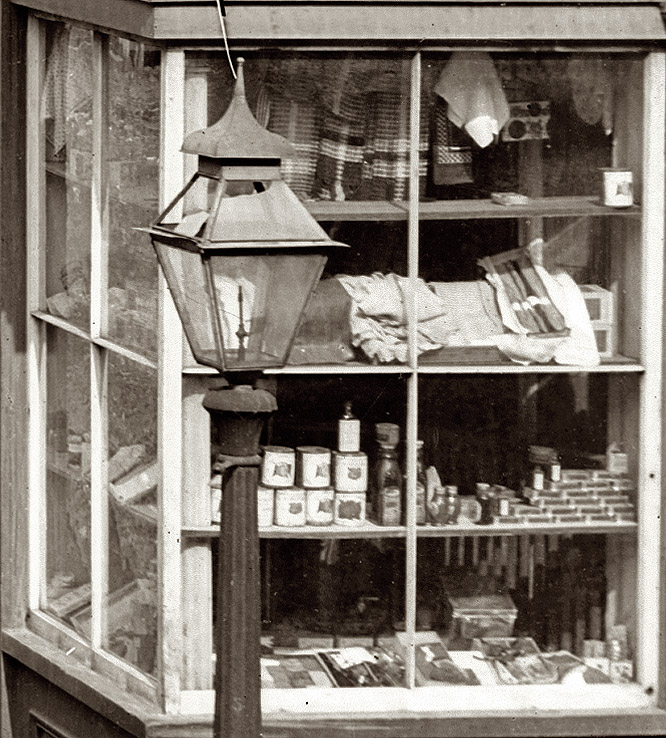


Framed or unframed, desk size to sofa size, printed by us in Arizona and Alabama since 2007. Explore now.
Shorpy is funded by you. Patreon contributors get an ad-free experience.
Learn more.

- Freeze Frame
- Texas Flyer wanted
- Just a Year Too Soon
- WWII -- Replacing men with women at the railroad crossing.
- Yes, Icing
- You kids drive me nuts!
- NOT An Easy Job
- I wonder
- Just add window boxes
- Icing Platform?
- Indiana Harbor Belt abides
- Freezing haze
- Corrections (for those who care)
- C&NW at Nelson
- Fallen Flags
- A dangerous job made worse
- Water Stop
- Passenger trains have right of way over freights?
- Coal
- Never ceases to amaze me.
- Still chuggin' (in model form)
- Great shot
- Westerly Breeze
- For the men, a trapeze
- Tickled
- Sense of loneliness ...
- 2 cents
- Charm City
- What an Outrage
- Brighton Park
Print Emporium
Stove Warehouse: 1865

The Petersburg, Virginia, courthouse in 1865. From photographs of the main Eastern theater of war, the siege of Petersburg, June 1864-April 1865. Glass plate negative, right half of stereograph pair. Photographer unknown. View full size.
To-Day
Always fun to take a look at what what's there in the modern day.
Old Town Petersburg
The courthouse is, of course, still there and is still in use. I spent a week there as a jury member back in 2002. The picture of the window also looks quite familiar; I believe that storefront remains relatively unchanged. It would be interesting to bring a printout of this picture and look at the trees to see if they might be the same; I can't recall how big the trees are around the building.
Petersburg's Old Town, where the courthouse is located, is worth a half day or so. Try to go on one of the Fridays when the art crowd has the galleries open; not sure which Friday of the month that is but it shouldn't be hard to find. Stay for dinner at Wabi Sabi (interesting basement renovation) or Brickhouse Run.
Petersburg Court House
The courthouse building still exists. The nice brick buildings in the foreground are, alas, now a parking lot.
Petersburg
Interesting, with the blur in the trees, you can tell the wind was blowing this day.
[There's a swinging shutter, too. - Dave]
Siege of Petersburg
According to the Petersburg Siege Museum, the city of Petersburg, Virginia, became the setting for the longest siege in American history when General Ulysses S. Grant failed to capture Richmond in the spring of 1864. Grant settled in to subdue the Confederacy by surrounding Petersburg and cutting off General Robert E. Lee's supply lines into Petersburg and Richmond. On April 2, 1865, nine-and-one-half months after the siege began, Lee evacuated Petersburg.
The National Park Service gives this description of the battle than precipitated the siege:
Marching from Cold Harbor, Meade’s Army of the Potomac crossed the James River on transports and a 2,200-foot long pontoon bridge at Windmill Point. Butler’s leading elements (XVIII Corps and Kautz’s cavalry) crossed the Appomattox River at Broadway Landing and attacked the Petersburg defenses on June 15. The 5,400 defenders of Petersburg under command of Gen. P.G.T. Beauregard were driven from their first line of entrenchments back to Harrison Creek. After dark the XVIII Corps was relieved by the II Corps. On June 16, the II Corps captured another section of the Confederate line; on the 17th, the IX Corps gained more ground. Beauregard stripped the Howlett Line (Bermuda Hundred) to defend the city, and Lee rushed reinforcements to Petersburg from the Army of Northern Virginia. The II, XI, and V Corps from right to left attacked on June 18 but was repulsed with heavy casualties. By now the Confederate works were heavily manned and the greatest opportunity to capture Petersburg without a siege was lost. The siege of Petersburg began. Union Gen. James St. Clair Morton, chief engineer of the IX Corps, was killed on June 17.
Shutters
I wonder about the shutters myself. I'm not familiar enough with the so-called Siege of Petersburg (I say so called because the city itself wasn't completely encircled as in a classic siege) to know whether the town itself was shelled. Presumably shutters might offer at least some protection from things like shell fragments, though I'm not sure about concussion from explosions. Window glass would undoubtedly have been extremely difficult to replace within the city. There seems to have been at least some damage to the street lamp. Note also the absence of window glass on the south facing(?) third floor windows as opposed to the windows on the street leading to the courthouse. The battle lines were to the south of the city.
The photo is most likely after the siege - if for no other reason than the scarcity of the chemicals needed for photography during the war on the Confederate side. The window seems relatively well stocked, including canned goods (canned tomatoes?) which suggests that the proprietor can finally get a steady supply at goods at acceptable prices.
[Most of these stereographs were taken by photographers working for the Union Army or were commissioned by the federal government. - Dave]
Site Navigation
This is unrelated to this photo (though as a future 19th c. US history PhD student, I do enjoy it), but I was wondering why there isn't a monthly archive in the side bar for this site? I know it's pretty common for most blogs, so I'm not sure how hard it would be to add, but it would be very useful for navigating the site. I only started coming here a couple months ago, and really want to explore the stuff I missed in the ten months before I found it. Problem is, I usually read this at work, and I can't advance to the "Last" page (it is blocked because of some reference to illegal drugs), so it takes a significant amount of time to go back two pages at a time.
Anyway, even if it doesn't happen, I still love this site, and I'm sure I'll work my way back to February 2007 someday!
[You can get to any page you want from "Address" field of your browser. If you are on page 3, for example, change the "3" to "100" (or any other page number) and then hit "Enter." - Dave]
Shutters
Mattie, I'll betcha those shutters were placed over that expensive corner window every night at closing time. It looks like these are four panes on both sides of the corner window - at least 6 feet total height = 3 foot panes. Probably very expensive in 1860's.
Goober Pea
Window shopping
I'd love to see a close up of the merchandise in that window. Also, I wonder why there are shutters leaning against the corner of the building?

























On Shorpy:
Today’s Top 5